-
 Bitcoin
Bitcoin $117,784.8122
6.03% -
 Ethereum
Ethereum $2,985.4492
7.49% -
 Tether USDt
Tether USDt $1.0002
-0.01% -
 XRP
XRP $2.6273
7.19% -
 BNB
BNB $688.8144
2.80% -
 Solana
Solana $164.1797
4.18% -
 USDC
USDC $0.9999
-0.01% -
 Dogecoin
Dogecoin $0.1989
10.08% -
 TRON
TRON $0.2961
2.12% -
 Cardano
Cardano $0.7259
15.27% -
 Hyperliquid
Hyperliquid $45.6326
10.22% -
 Sui
Sui $3.5222
9.17% -
 Chainlink
Chainlink $15.4621
7.77% -
 Bitcoin Cash
Bitcoin Cash $523.2404
1.57% -
 Stellar
Stellar $0.3163
8.13% -
 Avalanche
Avalanche $21.0098
7.48% -
 Hedera
Hedera $0.2044
14.78% -
 UNUS SED LEO
UNUS SED LEO $8.9812
0.11% -
 Shiba Inu
Shiba Inu $0.0...01346
7.75% -
 Toncoin
Toncoin $2.9763
3.02% -
 Litecoin
Litecoin $95.6221
5.22% -
 Polkadot
Polkadot $3.9508
7.50% -
 Monero
Monero $326.6734
1.59% -
 Uniswap
Uniswap $8.9185
8.19% -
 Dai
Dai $0.9999
-0.02% -
 Pepe
Pepe $0.0...01271
14.28% -
 Ethena USDe
Ethena USDe $1.0006
-0.03% -
 Bitget Token
Bitget Token $4.5228
2.14% -
 Aave
Aave $314.1302
6.41% -
 Pi
Pi $0.4909
0.64%
What is the difference between the PPS and PPLNS of a mining pool?
Mining pools use PPS for steady payouts and PPLNS to reward recent activity, affecting miners' income stability and pool loyalty. Choose based on risk tolerance and needs.
Apr 16, 2025 at 04:43 pm
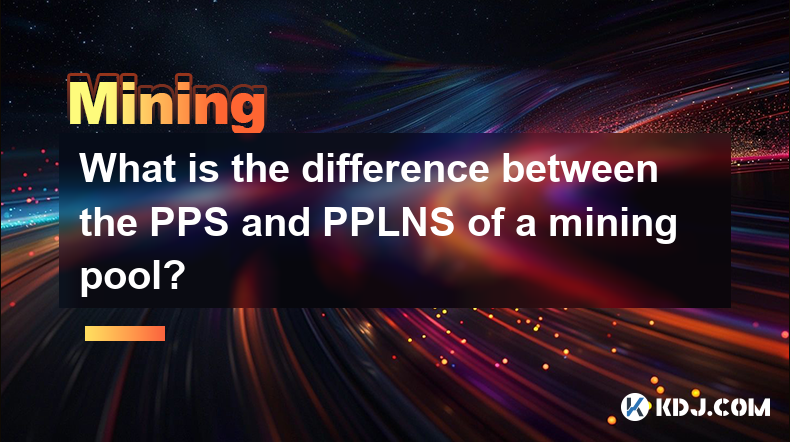
Mining pools are crucial for cryptocurrency miners as they allow individuals to combine their computational resources to increase their chances of solving complex cryptographic puzzles and earning rewards. Two popular payout methods in mining pools are Pay Per Share (PPS) and Pay Per Last N Shares (PPLNS). Understanding the differences between these two methods can help miners choose the most suitable pool for their needs.
PPS (Pay Per Share)
PPS is a payout method where miners receive a fixed amount of cryptocurrency for each share they contribute to the pool, regardless of whether the pool successfully mines a block. This method provides miners with a predictable and steady income, as they are rewarded for their efforts immediately.
In a PPS system, the pool operator takes on the risk of not finding a block. The pool maintains a reserve to cover the payouts, and miners can withdraw their earnings at any time. The payout rate per share is determined by the pool's total hash rate and the current block reward.
PPLNS (Pay Per Last N Shares)
PPLNS is a payout method where miners are rewarded based on the number of shares they contributed to the pool within a certain time frame, typically the last N shares before a block is found. This method encourages miners to remain loyal to the pool, as their earnings are influenced by their recent activity.
In a PPLNS system, the pool's total reward for finding a block is distributed among the miners who contributed shares within the specified window. The payout is proportional to the number of shares each miner contributed during that period. If a miner stops mining or switches pools, they will not receive rewards for shares contributed outside the specified window.
Key Differences Between PPS and PPLNS
The main differences between PPS and PPLNS lie in the predictability of payouts, the risk distribution, and the incentives for miners.
Predictability of Payouts: PPS offers a more predictable income stream for miners, as they receive a fixed amount for each share. In contrast, PPLNS payouts can vary significantly, depending on the pool's success in finding blocks and the miner's recent activity.
Risk Distribution: In PPS, the pool operator bears the risk of not finding a block, as they must pay miners regardless of the pool's success. PPLNS shifts this risk to the miners, as their earnings depend on the pool's ability to find blocks within the specified window.
Incentives for Miners: PPS does not incentivize long-term loyalty, as miners are paid for each share regardless of their ongoing commitment. PPLNS, on the other hand, rewards miners for their recent activity, encouraging them to remain active and loyal to the pool.
Choosing Between PPS and PPLNS
When deciding between PPS and PPLNS, miners should consider their individual needs and preferences. Some factors to consider include:
Income Stability: If miners prioritize a stable and predictable income, PPS may be the better choice. PPLNS can result in higher earnings during successful periods but also carries the risk of lower payouts during less fortunate times.
Risk Tolerance: Miners with a higher risk tolerance may prefer PPLNS, as it offers the potential for higher rewards but also exposes them to the risk of lower earnings. Those who prefer a more secure and predictable income may opt for PPS.
Pool Loyalty: If miners value loyalty and want to encourage a stable mining community, PPLNS may be more suitable. PPS does not incentivize long-term commitment, as miners can switch pools without affecting their immediate earnings.
Impact on Mining Pool Operations
The choice between PPS and PPLNS also affects the operations and strategies of mining pools. Pool operators must consider the following factors:
Financial Management: PPS requires pool operators to maintain a reserve to cover payouts, as they must pay miners regardless of the pool's success. PPLNS does not require such a reserve, as payouts are tied to the pool's ability to find blocks.
Attracting Miners: PPS may attract miners who prioritize stability and predictability, while PPLNS may appeal to those seeking higher potential rewards and willing to take on more risk. Pool operators must balance these factors to attract and retain a diverse group of miners.
Pool Size and Hash Rate: The choice of payout method can influence the pool's size and hash rate. PPS may attract more miners due to its stability, potentially leading to a larger pool. PPLNS may result in a more concentrated group of loyal miners, potentially affecting the pool's overall hash rate.
Real-World Examples
To illustrate the differences between PPS and PPLNS, let's consider two hypothetical mining pools:
Pool A uses PPS and offers a fixed payout of 0.0001 BTC per share. Miners can expect a steady income, but the pool operator must maintain a reserve to cover payouts.
Pool B uses PPLNS with a window of the last 10,000 shares. Miners are rewarded based on their recent activity, and their earnings can vary significantly depending on the pool's success in finding blocks.
In Pool A, a miner who contributes 100 shares per day will earn 0.01 BTC daily, regardless of the pool's success in finding blocks. In Pool B, the same miner's earnings will depend on the pool's ability to find blocks within the last 10,000 shares and their recent activity. If Pool B finds a block and the miner contributed 1% of the shares within the window, they may earn a larger share of the block reward compared to Pool A.
Frequently Asked Questions
Can a mining pool switch between PPS and PPLNS?
Yes, a mining pool can switch between PPS and PPLNS, but it requires careful planning and communication with miners. The pool operator must consider the impact on their financial management, the potential shift in miner base, and the overall stability of the pool.
How do pool fees differ between PPS and PPLNS?
Pool fees can vary between PPS and PPLNS pools. PPS pools may charge higher fees to cover the cost of maintaining a reserve for payouts, while PPLNS pools may have lower fees since they do not require such a reserve. Miners should compare the fees and potential earnings when choosing a pool.
Which payout method is more common among mining pools?
Both PPS and PPLNS are widely used among mining pools, and the prevalence of each method can vary depending on the cryptocurrency and the specific pool. Some pools offer a choice between the two methods, allowing miners to select the one that best suits their needs.
How does the choice of payout method affect the overall security of a cryptocurrency network?
The choice of payout method can indirectly affect the security of a cryptocurrency network by influencing the distribution of mining power. PPS may attract more miners due to its stability, potentially leading to a more decentralized network. PPLNS may result in a more concentrated group of loyal miners, which could impact the network's resilience to attacks. However, the overall impact on security depends on various factors, including the cryptocurrency's consensus mechanism and the total number of miners in the network.
Disclaimer:info@kdj.com
The information provided is not trading advice. kdj.com does not assume any responsibility for any investments made based on the information provided in this article. Cryptocurrencies are highly volatile and it is highly recommended that you invest with caution after thorough research!
If you believe that the content used on this website infringes your copyright, please contact us immediately (info@kdj.com) and we will delete it promptly.
- SEI Price Exploded? Decoding the Recent Surge and What's Next
- 2025-07-11 16:50:12
- Redstone Bridges, Native Token, Solana Integration: A Web3 Evolution
- 2025-07-11 16:55:12
- BNB's Resistance Test: Will the Token Burn Ignite a Breakout?
- 2025-07-11 17:10:13
- Bitcoin's Wild Ride: Rally, Surge, and Meme Coin Mania!
- 2025-07-11 14:50:12
- BlockDAG, KAS, Pi Network: Decoding the Hype and Headlines
- 2025-07-11 15:10:12
- Binance's Sharia Earn: Halal Staking Revolutionizes Crypto Investments
- 2025-07-11 15:15:12
Related knowledge
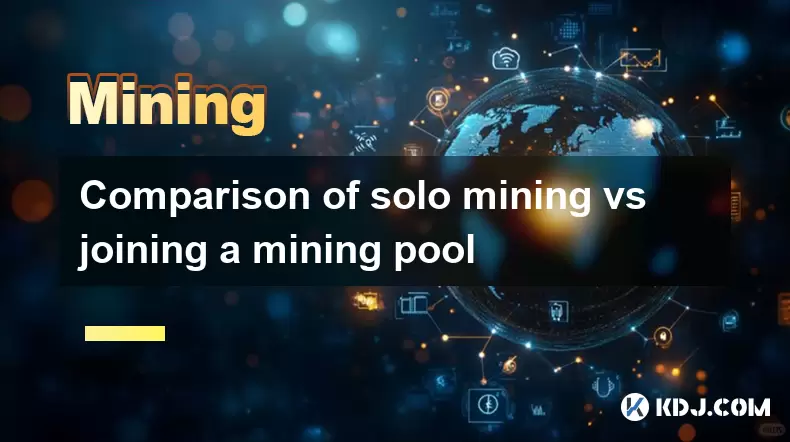
Comparison of solo mining vs joining a mining pool
Jul 05,2025 at 07:17pm
Understanding the Basics of Cryptocurrency MiningCryptocurrency mining involves validating transactions and adding them to a blockchain through comput...
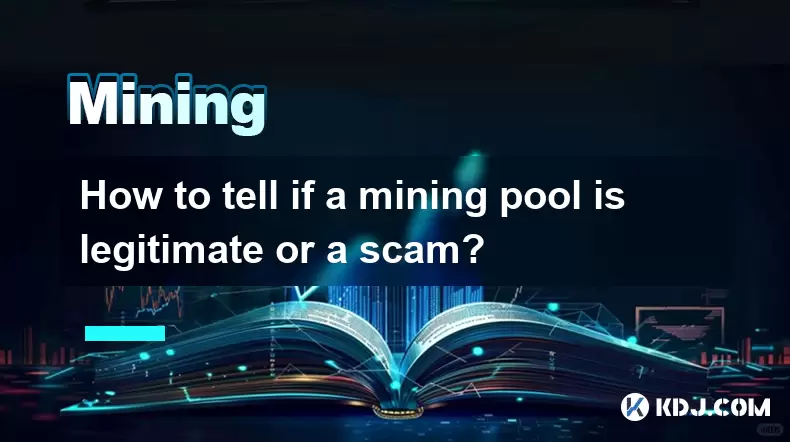
How to tell if a mining pool is legitimate or a scam?
Jul 03,2025 at 12:35pm
Understanding the Role of Mining PoolsMining pools play a crucial role in cryptocurrency mining by allowing individual miners to combine their computa...
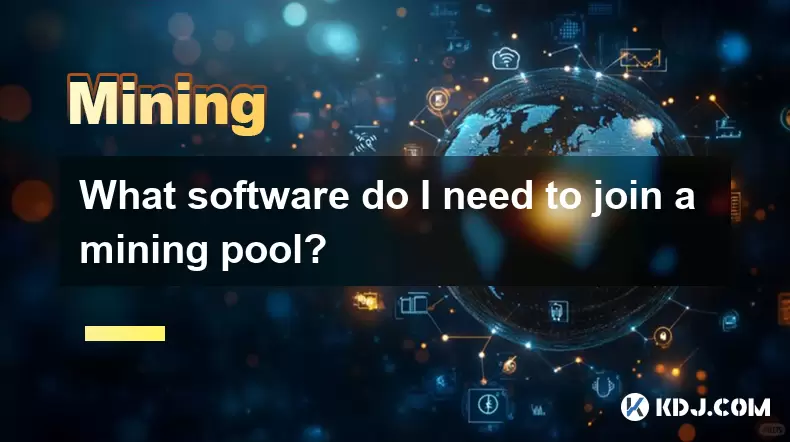
What software do I need to join a mining pool?
Jul 05,2025 at 07:32pm
Understanding Mining Pools and Their RequirementsJoining a mining pool is an essential step for many cryptocurrency miners who want to increase their ...
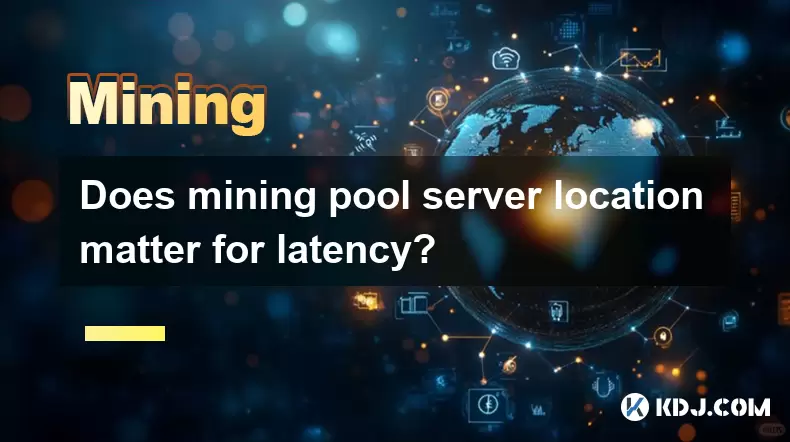
Does mining pool server location matter for latency?
Jul 06,2025 at 04:49pm
Understanding the Relationship Between Mining Pool Server Location and LatencyMining pool server location plays a crucial role in determining the late...

How to create your own private mining pool?
Jul 07,2025 at 02:51am
What Is a Private Mining Pool?A private mining pool is a restricted group of cryptocurrency miners who combine their computational resources to increa...
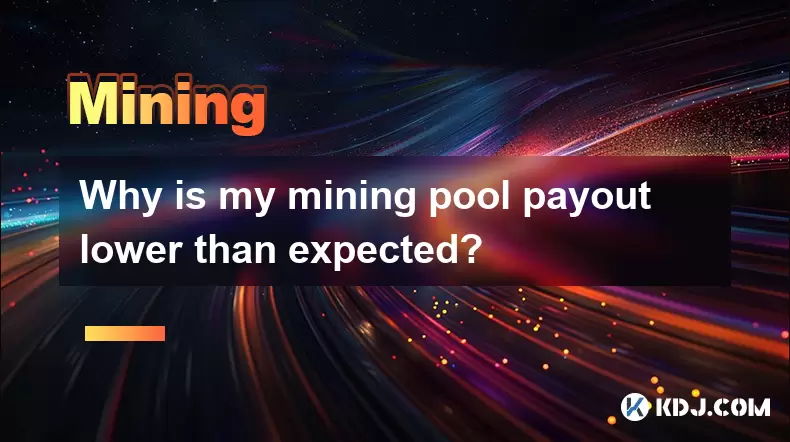
Why is my mining pool payout lower than expected?
Jul 03,2025 at 02:21am
Understanding Mining Pool Payout StructuresWhen you join a mining pool, it's important to understand the specific payout structure that the pool uses....

Comparison of solo mining vs joining a mining pool
Jul 05,2025 at 07:17pm
Understanding the Basics of Cryptocurrency MiningCryptocurrency mining involves validating transactions and adding them to a blockchain through comput...

How to tell if a mining pool is legitimate or a scam?
Jul 03,2025 at 12:35pm
Understanding the Role of Mining PoolsMining pools play a crucial role in cryptocurrency mining by allowing individual miners to combine their computa...

What software do I need to join a mining pool?
Jul 05,2025 at 07:32pm
Understanding Mining Pools and Their RequirementsJoining a mining pool is an essential step for many cryptocurrency miners who want to increase their ...

Does mining pool server location matter for latency?
Jul 06,2025 at 04:49pm
Understanding the Relationship Between Mining Pool Server Location and LatencyMining pool server location plays a crucial role in determining the late...

How to create your own private mining pool?
Jul 07,2025 at 02:51am
What Is a Private Mining Pool?A private mining pool is a restricted group of cryptocurrency miners who combine their computational resources to increa...

Why is my mining pool payout lower than expected?
Jul 03,2025 at 02:21am
Understanding Mining Pool Payout StructuresWhen you join a mining pool, it's important to understand the specific payout structure that the pool uses....
See all articles

























































































